Table of Contents
With the increase in variable renewable energy (solar and wind power) penetration globally, long-duration energy storage (LDES) solutions such as flow battery technology will be essential in meeting the decarbonization goals, grid efficiency, and reliability needs.
Also known as redox (reduction-oxidation) batteries, flow batteries are increasingly being used in LDES deployments due to their relatively lower levelized cost of storage (LCOS), safety and reliability, among other benefits.
What is a flow battery made of? Who makes flow batteries? Keep reading to learn more about our top 10 picks for flow battery companies.
An Introduction to Flow Batteries
What is a Flow Battery?
What is a flow battery? A flow battery is an electrochemical cell that converts chemical energy into electrical energy as a result of ion exchange across an ion-selective membrane that separates two liquid electrolytes stored in separate tanks. Typical flow battery chemistries include all vanadium, iron-chromium, zinc-bromine, zinc-cerium, and zinc-ion. However, current commercial flow batteries are based on vanadium- and zinc-based flow battery chemistries.
Vanadium’s unique ability to exist in four states of oxidation makes it a preferred material in a flow battery’s reduction and oxidation processes.
While a traditional redox flow battery uses metal ions for the electrolyte, an organic flow battery uses naturally abundant elements like carbon, hydrogen, and oxygen to store and release energy. Apart from the fully recyclable organic electrolyte, a uniquely scalable design makes an organic flow battery more efficient and sustainable for bulk storage applications.
Flow Battery Advantages
Flow batteries offer several advantages, such as:
Ability to discharge and recharge at the same time
Durable and stable performance
Long cycle life
Low maintenance
Modular scalability
No harmful emissions
No noise pollution
Quick response times
Tolerance to overcharge and over-discharge
Very low self-discharge
The Working Principle of a Flow Battery
As a rechargeable battery, a flow battery leverages the charging and discharging processes that allow selected ions to pass and complete chemical reactions in a constant “flow.”
Here is how a flow battery works:
Flow Batteries for Energy Storage
Lithium-ion (Li-ion) was one of the major battery chemistries used for electrified transportation and stationary storage. While time-tested lithium-ion batteries (Li-ion batteries) are believed to account for more than 80% of grid-scale energy storage, the biggest issue is the extremely low duration of stored electricity that can be fed back to the power grid.
Furthermore, fire risk, performance degradation, recycling challenges and other factors limit the application of lithium-ion batteries.
As investors start looking for energy storage solutions not constrained by supply shortages and price volatility, future-ready ESS (energy storage systems) flow batteries unlock new opportunities in energy storage.
Moreover, flow battery systems meet environmental, social, and corporate governance (ESG) standards and are, therefore, positioned to effectively reduce environmental contamination.
In recent times, global-scale flow battery technology adoption is closely linked with the surging energy storage market. Flow batteries help create a more stable grid and reduce grid congestion and fill renewable energy production shortfalls for asset owners.
Global R&D is fueling the development of flow battery chemistry by significantly enabling higher energy density electrodes and also extending flow battery applications.
For example, Pacific Northwest National Laboratory’s (PNNL) redox flow laboratories conduct fundamental research and test large-scale battery stacks under various real grid application conditions to optimize redox flow battery efficiency.
Top Flow Battery Companies (2025)
Company Name | Founded | Headquarters | Specialization / Top Products |
CellCube Energy Storage | 2000 | Wiener Neudorf, Niederösterreich, Austria | Vanadium Redox Flow Batteries – CellCube FB Series |
ESS Inc. | 2011 | Wilsonville, Oregon, USA | Iron Flow Batteries – Energy Warehouse™, Energy Center™; long-duration, non-toxic storage |
Invinity Energy Systems | 2020 (via merger of redT + Avalon) | Saint Helier, Jersey, the UK | Vanadium Flow Batteries – VS3, Endurium series; known for large-scale energy storage |
Largo Inc. | 1988 | Toronto, Ontario | vanadium and ilmenite- global supplier |
Lockheed Martin Corporation | 1995 | Bethesda, Maryland, United States | GridStar® Flow |
Primus Power | 2009 | Hayward, California, USA | Zinc–Bromine Flow Batteries – EnergyPod systems |
Rongke Power | 2008 | Dalian, China | U Power Series, S Power Series |
SCHMID Group | 1864 | Freudenstadt, Germany | SCHMID EverFlow® energy storage |
Sumitomo Electric | 1897 | Osaka, Japan | Redox Flow Batteries – VRB system for utility and industrial-scale storage |
VRB Energy | 2018 | Vancouver, British Columbia, Canada | VRB-ESS® |
Now that we got to know flow batteries better, let us look at the top 10 flow battery companies in the flow battery market (listed in alphabetical order):
CellCube (Enerox GmbH)
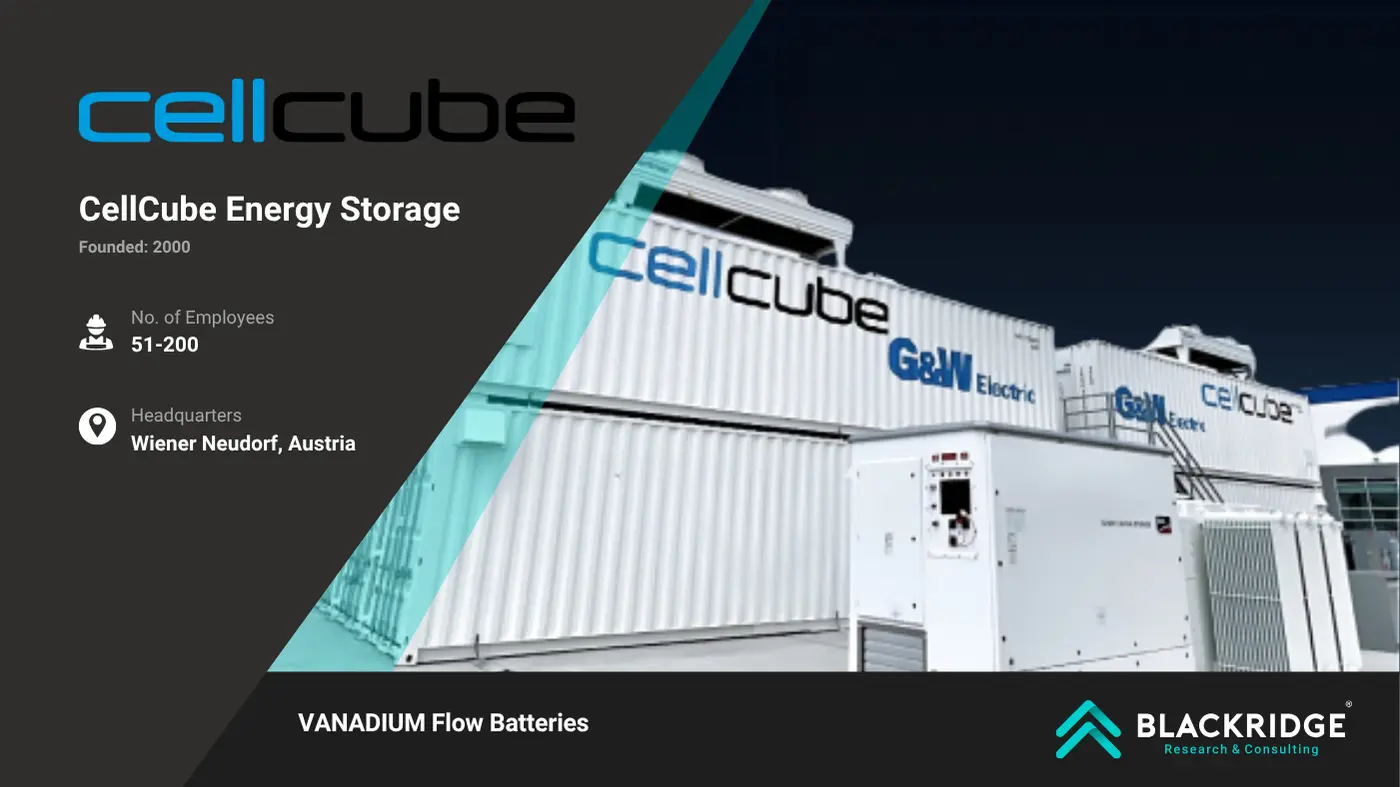
The Austrian company Enerox GmbH is the manufacturer and distributor of vanadium redox flow batteries under the brand name “CellCube.” CellCube is one of the leading companies in long-term energy storage solutions.
CellCube provides high-quality, cost-efficient on- and off-grid redox flow battery solutions to meet the global demand for energy storage infrastructure. CellCube has an outstanding reputation for realizing the highest number of flow battery projects in the industry.
South African vanadium company Bushveld Minerals has invested in Enerox to scale up sales and manufacturing capacity against the backdrop of the fast-growing demand for long-duration energy storage solutions.
The CellCube system meets the most stringent safety standards and is ideal for different applications—from microgrid and off-grid storage to the integration of renewable energy at various grid levels.
CellCube is one of the leading choices for multi-hour storage systems. In a stringent endurance test over many years, the key components of the CellCube system went through over 10,000 cycles without interruption—demonstrating robust performance even under the most demanding circumstances.
In 2018, CellCube Energy Storage Systems Inc announced the complete acquisition of Pure Vanadium Corp a research and technology company that specializes in the development of vanadium electrolyte (VE) formulations for grid-scale electrical storage batteries.
Likewise, it has also acquired Hillcroft Consulting Ltd which specializes in designing temporary and mobile power products used for industrial and construction sites for shut-downs, turnarounds, and large-scale construction demolition.
ESS Tech Inc.
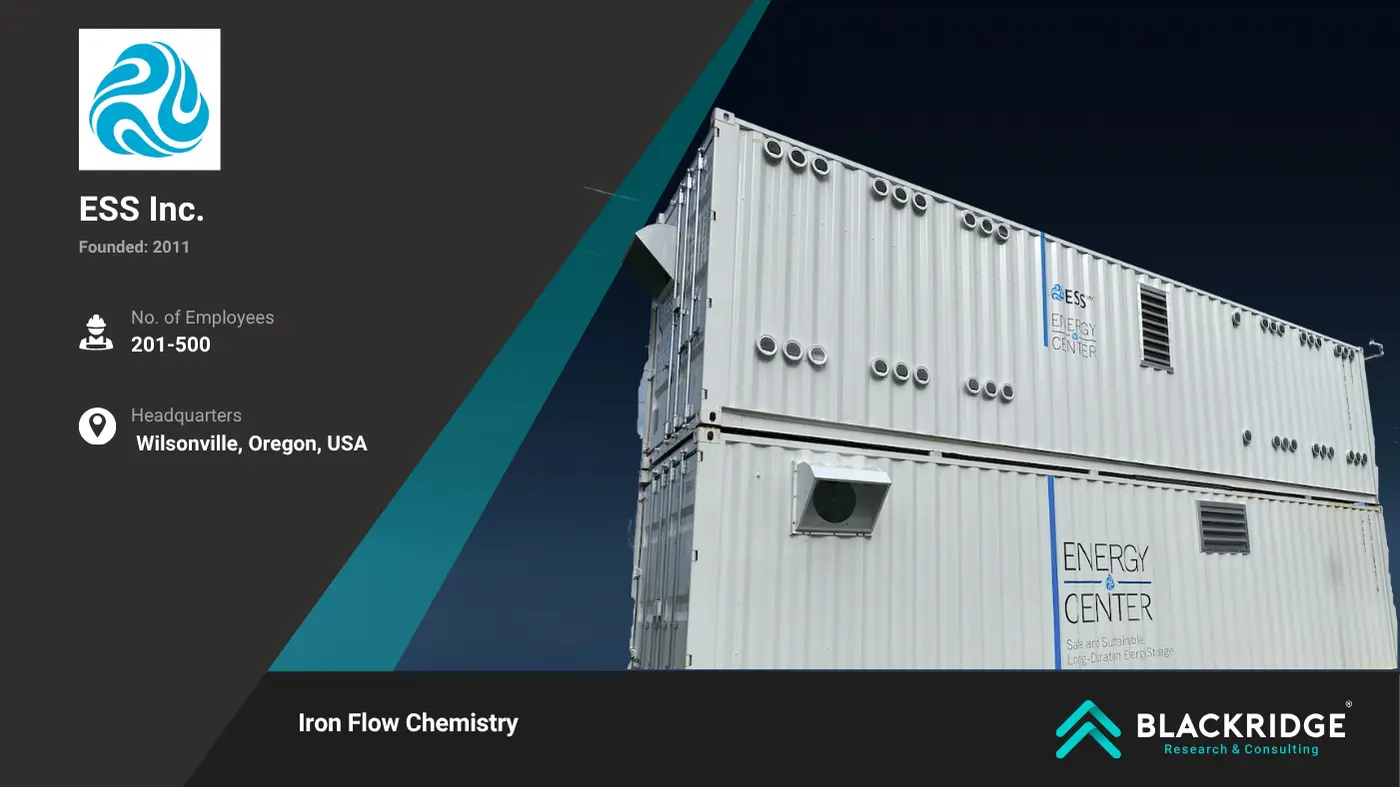
Established in 2011, ESS designs, builds and deploys long-duration and low-cost iron flow batteries for commercial and utility-scale energy storage applications. In 2019, ESS Inc. raised USD 30 million in a major Series C round of funding from the investor group Breakthrough Energy Ventures (BEV) and SoftBank Group’s SB Energy.
Breakthrough Energy Ventures is led by investors comprising Bill Gates, Jeff Bezos, Michael Bloomberg, Mukesh Ambani, and Richard Branson, among others.
Using abundantly available iron, salt, and water for the electrolyte, the company’s Energy Warehouse™ and Energy Center™ represent more flexible and non-lithium-ion storage that delivers top-tier performance with minimal environmental impact.
What are the ESS advantages?
Long-life asset with a design life of 25 years (containerized storage system)
The lowest overall cost of service, especially for heavy-use applications
No augmentation is necessary even when cycled continuously
Non-hazardous battery materials
Unlimited cycling (as validated by extensive DOE (Department of Energy) ARPA-E (Advanced Research Projects Agency-Energy) testing
Wide range of operating temperatures from -5°C to 50°C
Zero degradation (with respect to battery use)
Invinity Energy Systems
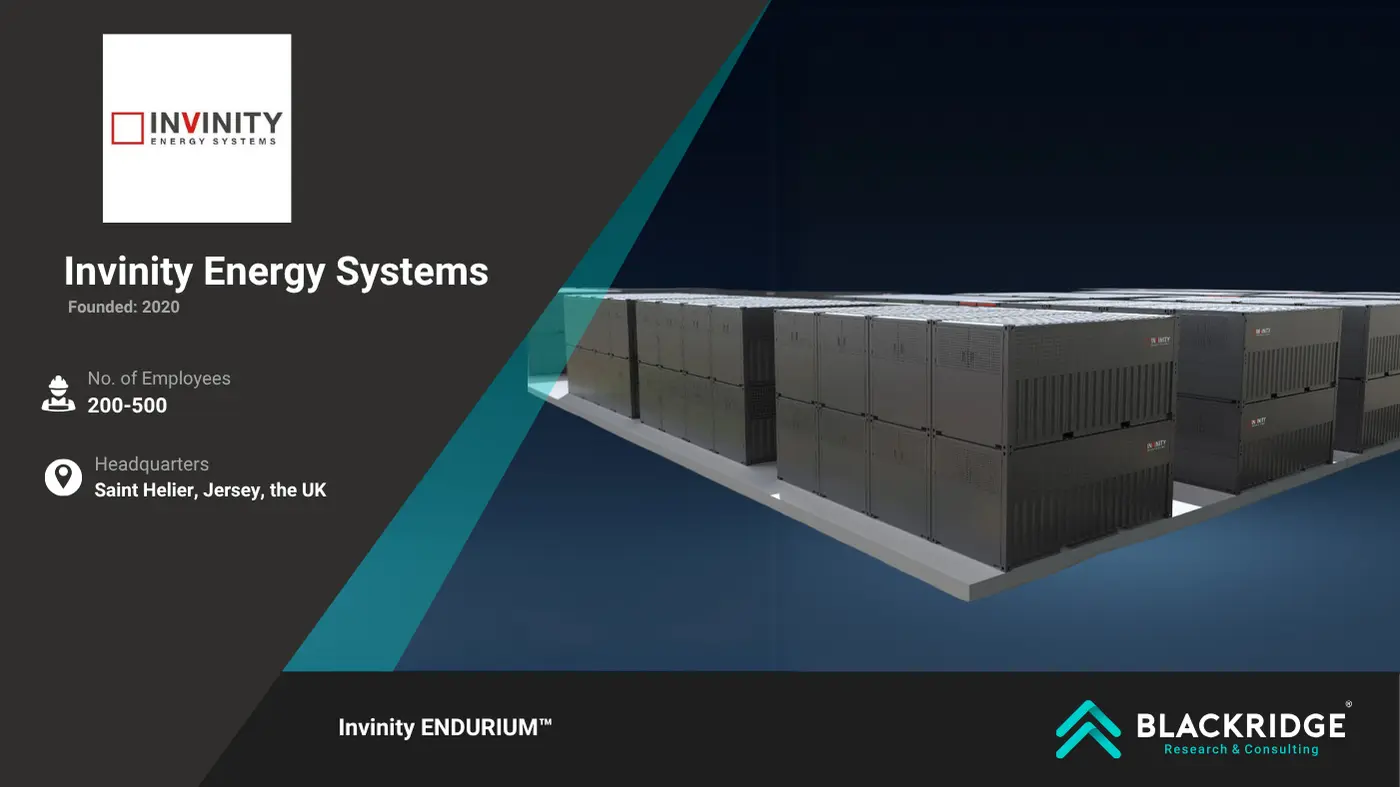
North America’s Avalon Battery and British company redT energy merged to form “Invinity Energy Systems”—a leading global vanadium flow battery company that specializes in utility-grade energy storage for commercial & industrial (C&I), grid-scale, and micro-grid applications.
Being non-flammable and safe by design, the factory-built and tested vanadium flow batteries provide long-term flexibility and reliability.
As several commercial and industrial businesses around the world unlock low-cost, low-carbon, and ROI-maximizing energy, Invinity batteries act as an ideal complement to photovoltaic (PV) systems, with significant benefits like improved resilience, increased operational freedom, and reduced electricity costs.
In 2025, Invinity Energy secured a deal to supply a 10.8 MWh ENDURIUM battery system for a solar-plus-storage project in Hungary.
Invinity Energy Systems on 26th February 2024, announced it had entered an agreement with Everdura a Taiwanese strategic partner to undertake domestic manufacturing of next-generation vanadium flow battery (VFB) products, with a code-name "Mistrak" that will be served in the Taiwanese and other markets.
Get Customized Global Flow Battery Market Report Download a Sample Report!
Largo Inc.
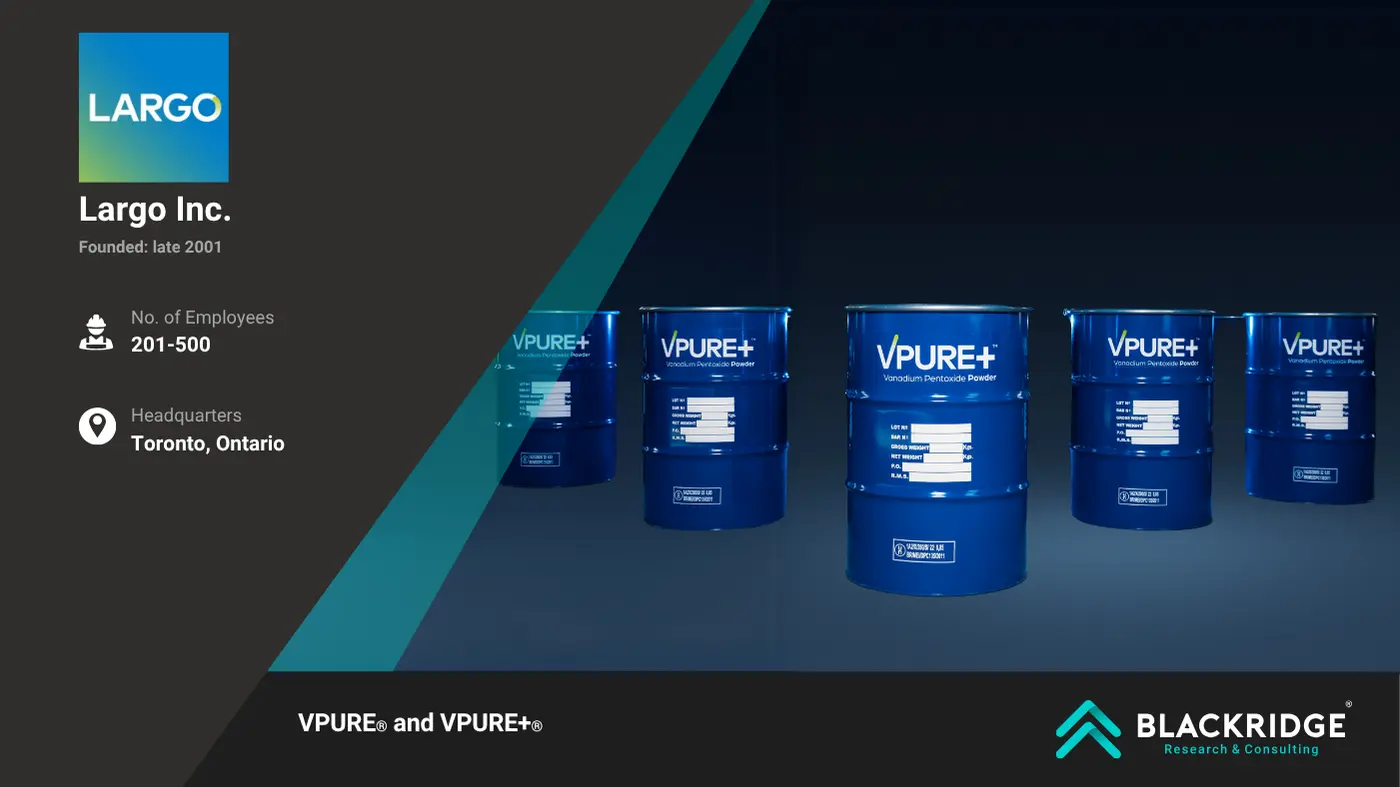
As one of the world’s leading vanadium companies, Largo provides innovative energy solutions for a low-carbon future. Largo sources its VPURE™ and VPURE+™ Flakes from the highest-grade vanadium deposits at the company’s Maracás Menchen Mine in Brazil. Largo’s VCHARGE products support grid stability and reliability as electricity systems gradually move away from fossil-fuel generation to lower the carbon footprint.
The company produces industry-preferred vanadium products, such as vanadium pentoxide flakes and vanadium pentoxide powder that are ideal for use in master alloying, catalyst and steel applications, vanadium redox flow batteries (VRFBs), and other applications.
In addition, Largo Resources launched Largo Clean Energy to provide vanadium redox flow battery (VRFB) systems to the rapidly growing renewable energy storage market. The newly launched company acquired the assets, including 12 patent families previously owned by the U.S. storage specialist VionX Energy—a manufacturer of power and energy storage products.
This acquisition marks a new beginning in the renewable energy storage business that continues to attract disruptive innovators with proven commercial and operational capabilities.
Lockheed Martin Corporation
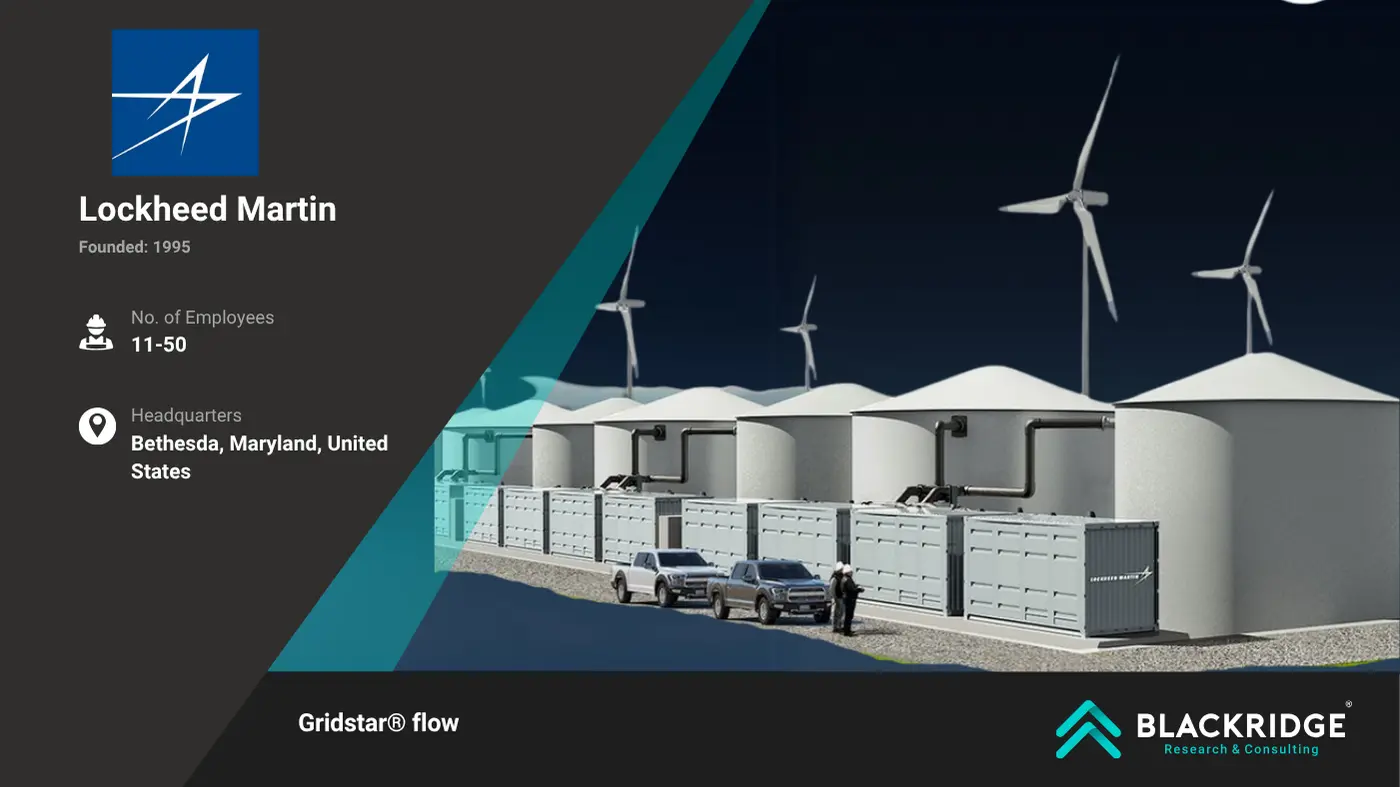
Humble beginnings made by Glenn L. Martin and the Lockheed brothers, Allan and Malcolm Lockheed, more than 100 years ago have transformed into a rich innovation legacy over the years.
Lockheed Martin has come a long way to establish an enviable repository of capabilities, including advanced manufacturing, energy storage, electronic warfare, and integrated air and missile defense.
The company has set a new standard in long-duration, large-capacity energy storage with GridStar® Flow—an innovative redox flow battery that is optimized for 6+ hours of flexible discharge and ideal for multiple applications, such as:
Large-scale transmission and distribution deferral
Peaking unit replacement
Renewable generation bulk shifting
What are the benefits of GridStar® Flow?
100% depth-of-discharge (DoD) with minimal degradation for long-lasting durability
Competitive total cost of ownership
Impressive durability with a design life of 20 years
Non-corrosive, non-flammable, and stable electrolyte solution
Value maximization with flexibility in architecture, optionality, and siting
Primus Power Solutions
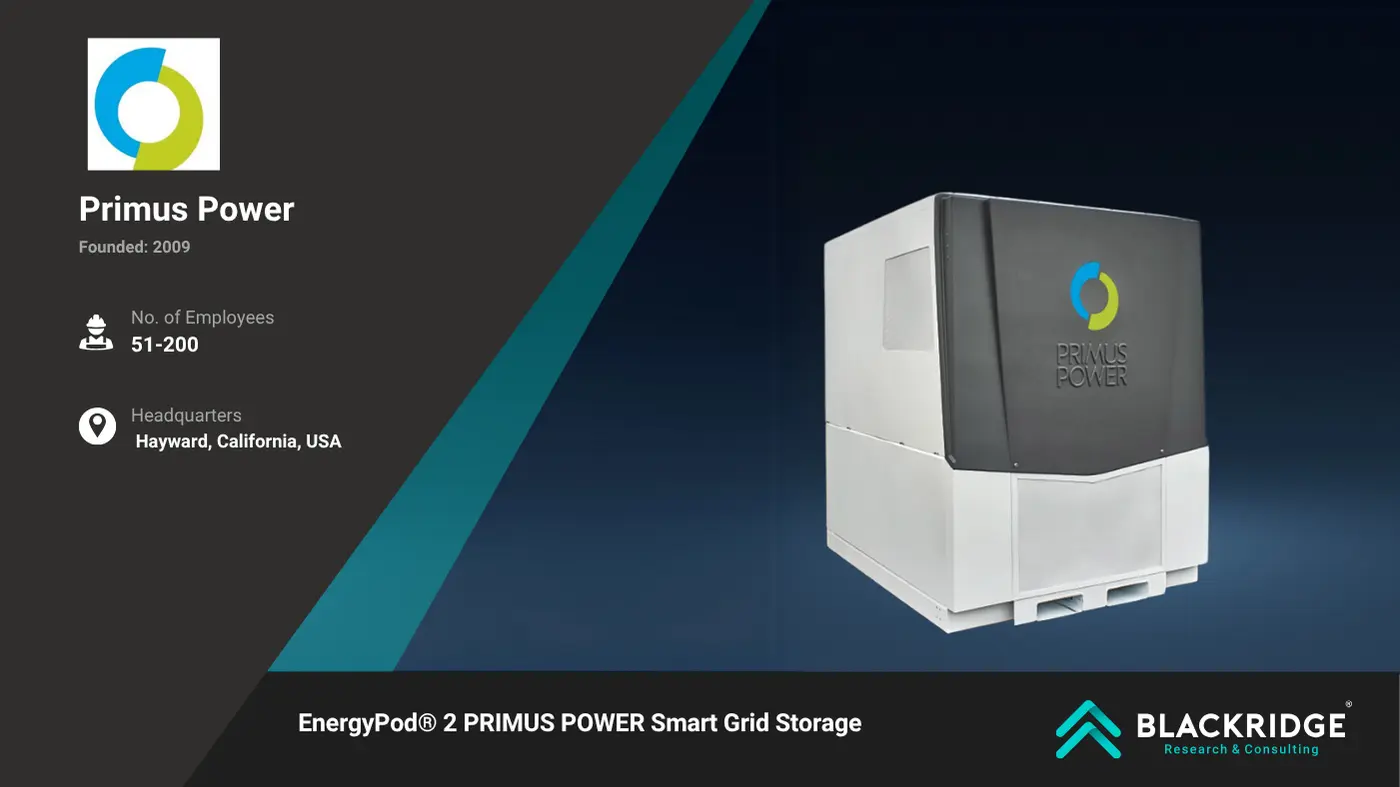
Primus Power Solutions provides low-cost, fade-free, and long-duration energy storage systems to commercial, industrial, renewables, and utilities markets. In an energy-optimizing world, it is crucial to balance grid and power fluctuations and ensure a stable, reliable supply of energy.
Keeping up with the demand for long-duration batteries to reduce outages and satisfy peak power needs, the company’s award-winning EnergyPod 2 ensures multiple hours of battery power (20-year life) without degradation and minimizes expensive utility upgrades on overloaded substations.
EnergyPod 2 presents superior energy capacity with a stable zinc-bromine flow battery (ZBFB), exceptional cell architecture and flow architecture, and an industry-leading LCOS.
Moreover, EnergyPod 2’s optimized design eliminates life-limiting battery components, including complex plumbing, graphite electrodes, and membranes/separators. Fire concerns? Not at all!
Rongke Power
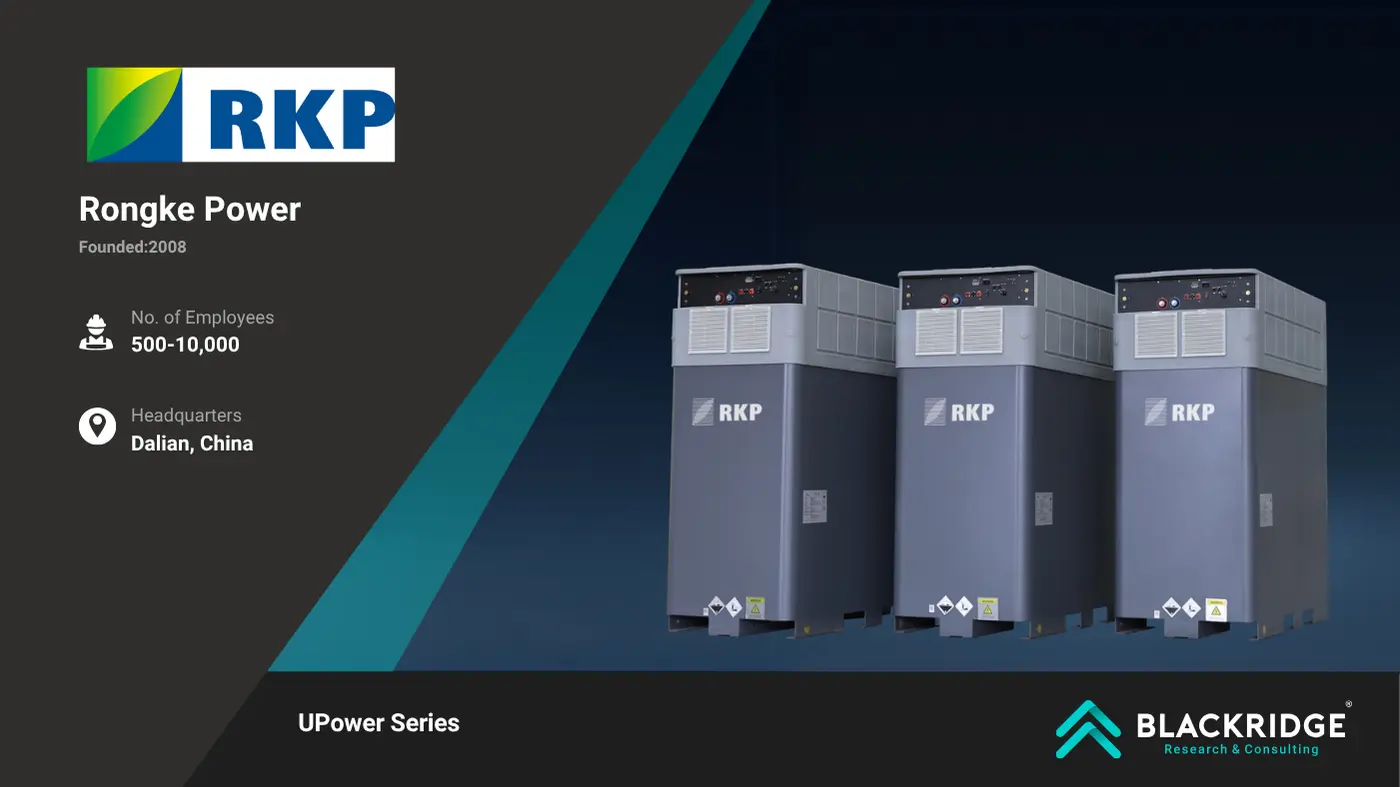
Rongke Power (RKP) is a global leader in VFBs (Vanadium flow batteries) and a renowned provider of energy storage solutions. founded in 2008, its portfolio boasts over 450 patent technologies and deployment of more than 2GWH of utility-scale batteries across the world.
Their achievement includes the world's largest grid-forming energy storage based on VFB technology - the Xinhua Ushi ESS project, the world's largest VFB project in the city center - the Dalian Concurrent Energy Storage Project.
Their product series includes U Power Series and S Power Series
U Power Series: It is designed for modular and scalable energy storage solutions suitable for residential, commercial, and industrial settings.
S Power Series: It is designed for large-scale, utility-grade energy storage projects with high energy capacity.
Both series are based on the Vanadium Redox Flow Battery Technology.
SCHMID Group
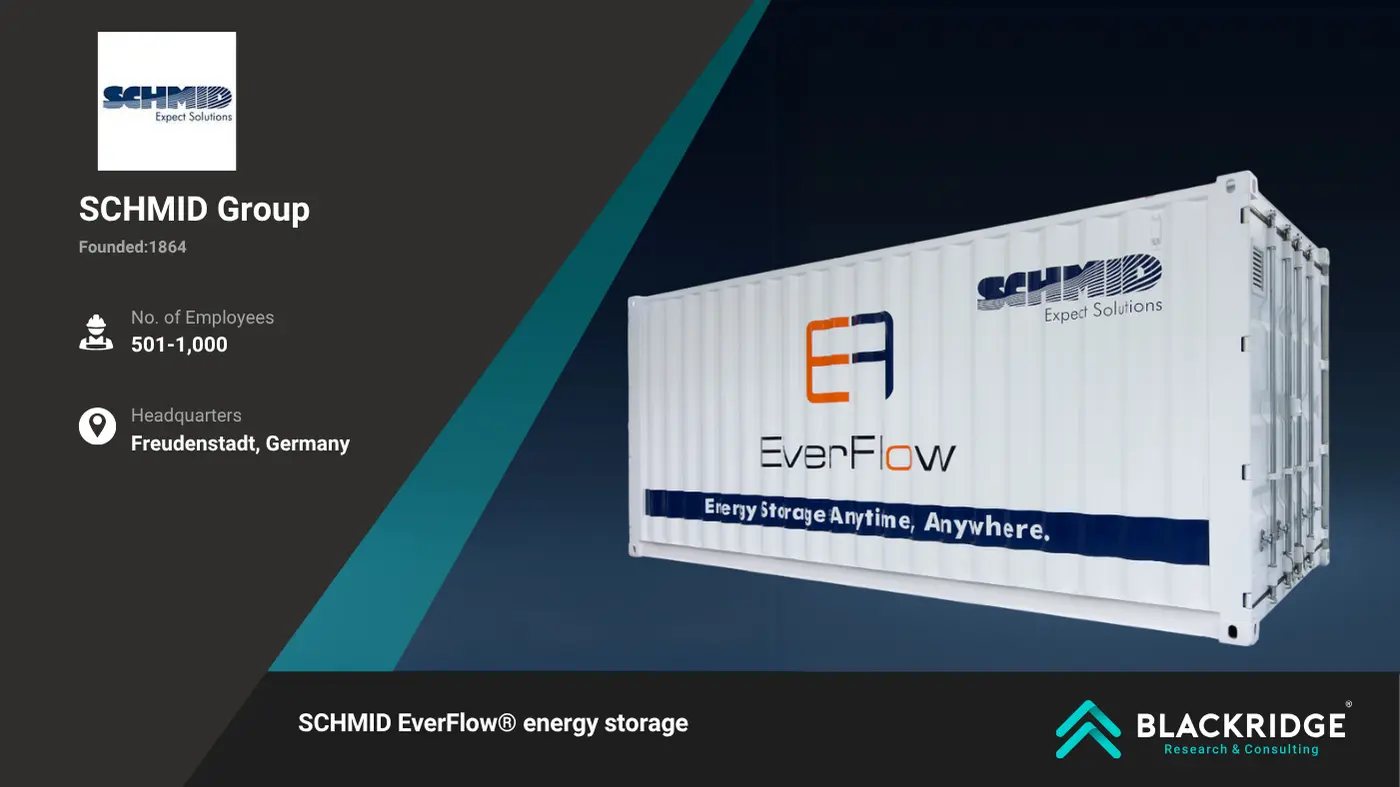
With over 155 years of company history, the SCHMID Group is well known for innovative energy storage systems and industrial machinery manufacturing with manufacturing sites in China, Germany, Turkey, the USA, and worldwide sales and service locations.
The SCHMID EverFlow® energy storage solution is based on the advanced vanadium redox flow battery (VRFB) technology to provide the best efficiency possible.
VRFB-based SCHMID energy systems provide decisive benefits, including:
100% deep discharge capability and recyclability
Compatibility with all renewable energy sources
Easy installation
Eco-friendly design
Flexible scalability
High cyclical resistance (generally up to 10,000 full cycles)
Integrated real-time monitoring
Lasting value—electrolyte lifetime of up to 40 years
Low-maintenance
No self-discharging in the tanks
Non-hazardous battery materials
Get Customized Global Flow Battery Market Report Download a Sample Report!
Sumitomo Electric Industries, Ltd.
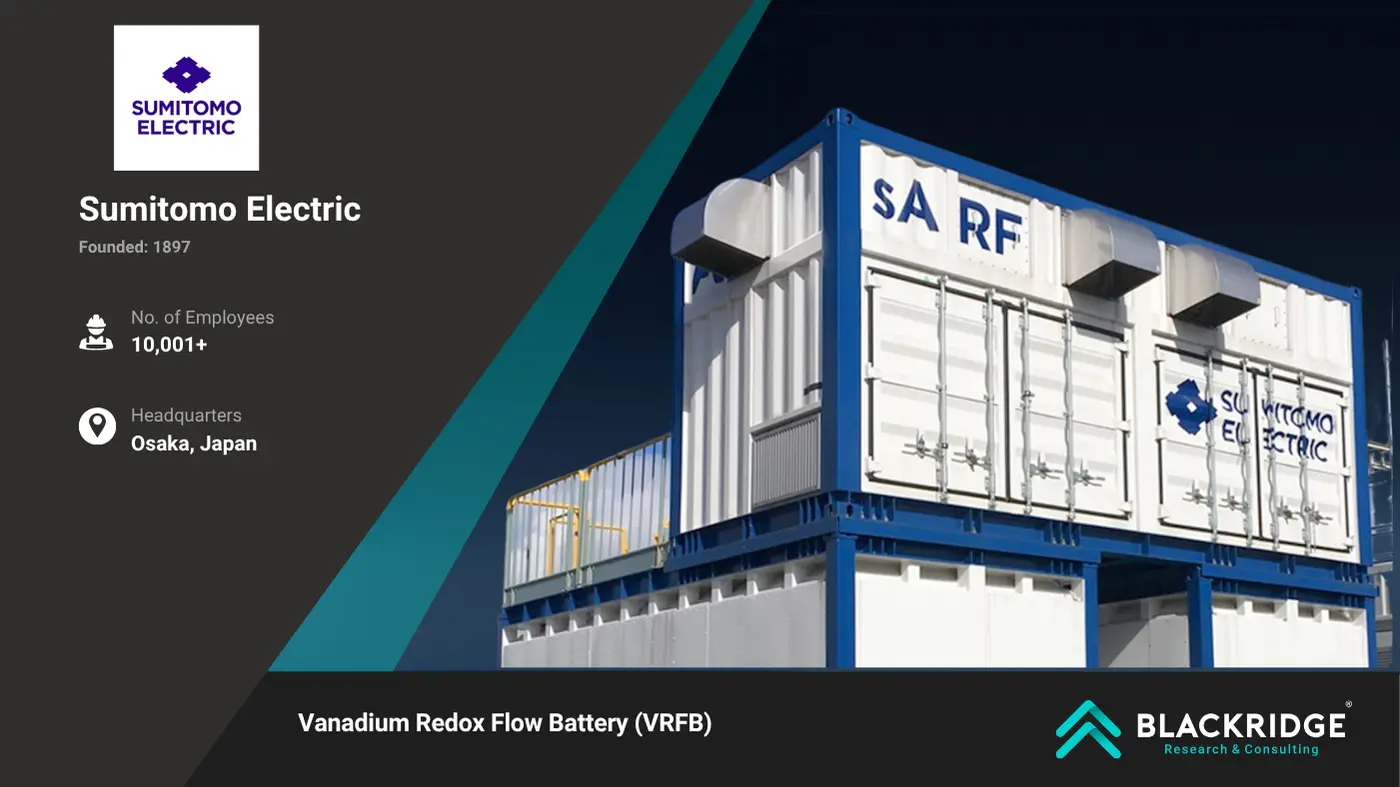
With a 120+ history of manufacturing innovation, Sumitomo Electric operates in five business segments, including automotive, infocommunications, electronics, environment and energy, and industrial materials.
The company provides various battery-based services to consumers, electric power companies, power retailers, and renewable energy producers. What makes Sumitomo Electric’s redox flow battery unique?
An unlimited number of charge-discharge cycles available without degradation
Cost-effective power generation with flexible battery design for short and long periods of output variation
Extremely low fire risk with non-combustible or flame-retardant materials
Long service life with semi-permanent electrolyte usage and a system endurance period of 20 years
Maximum safety in system operations
On 26th February 2025, Sumitomo Electric launched its advanced vanadium redox flow battery (VRFB) at Energy Storage North America (ESNA). This next-generation energy storage system is designed to increase energy density by 15%, reduce cost by 30% and provide 30-year operational life for the batteries. Sumitomo Electric will begin accepting orders for the new VRFB in 2025.
In June 2024, Sumimoto Electric announced the acquisition of a major shareholding in Südkabel, a renowned German high-voltage cable manufacturer. This acquisition was intended to bolster its HVDC cable (High-Voltage Direct Current).
VRB Energy
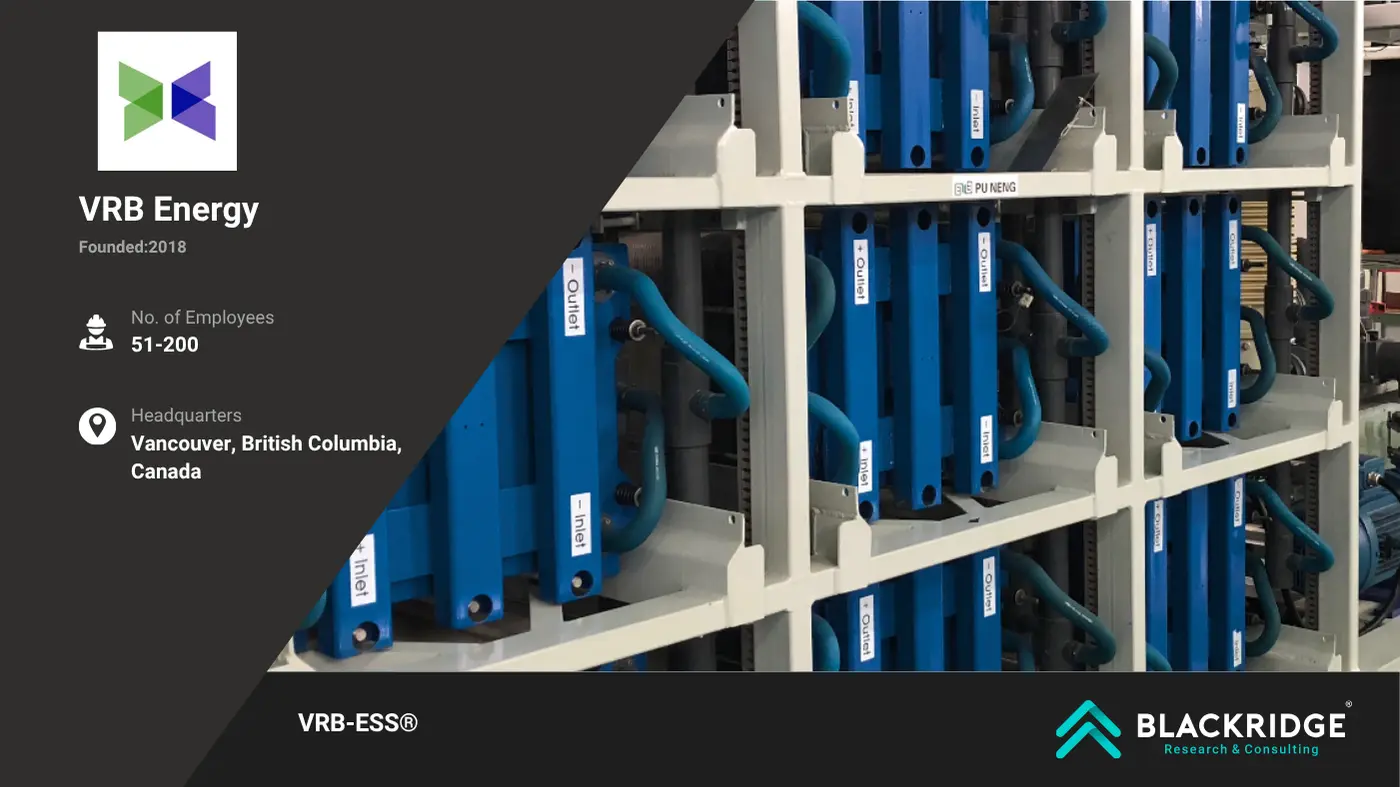
A company that is recognized globally for vanadium redox battery (VRB) technology is VRB Energy —majority-owned by Ivanhoe Electric, a subsidiary of I-Pulse. VRB Energy is credited with developing the world’s longest-lasting vanadium flow battery.
VRB Energy’s products are reliable, recyclable, safe, and scalable. What makes them different from other battery systems?
Customized power ratings
Non-toxic, non-flammable, and 100% reusable liquid electrolyte
Proven technology based on over 1,000,000 hours of operation on systems in R&D labs
Scalable energy capacity
Vanadium Redox Flow Battery vs. Iron Flow Battery
Also known as the vanadium flow battery (VFB) or the vanadium redox battery (VRB), the vanadium redox flow battery (VRFB) has vanadium ions as charge carriers. Due to their relative bulkiness, vanadium flow batteries are mainly used for grid energy storage.
The vanadium redox flow chemistry consists of vanadium redox couples (V2+/V3+ in the negative and V4+/V5+ in the positive half-cells) as active chemical species of the redox flow battery.
During the charging and discharging processes, H+ ions get exchanged between the two electrolyte tanks through a hydrogen-ion permeable polymer membrane.
On the other hand, an iron flow battery uses electrolytes made up of iron salts in an ionized form. As iron flow batteries consist of earth-abundant and non-toxic materials, they are environmentally friendly, safe, and one of the most reliable electrochemical energy storage devices.
Battery manufacturers are collaborating with utility companies to implement iron flow battery projects to eliminate a majority of the diesel-fueled power generation with the environmentally friendly flow battery system.
Furthermore, iron flow batteries have a longer asset life than Li-ion batteries. Unlike conventional battery chemistry with limited cycle life (7 to 10 years with a need for augmentation), iron flow battery chemistry such as that of ESS lasts 20 years or more without any capacity fade or degradation.
Conclusion
Worldwide renewable energy installation is increasing with a focus on the clean energy transition. How can we meet the ever-growing energy demand and make the transition at scale?
We can achieve realistic and relevant outcomes by adopting clean technology (cleantech) and incentivizing the development and commercialization of long-duration energy storage solutions.
As a flexible, reliable, and lower LCOS alternative to other battery chemistries, flow batteries are safe and sustainable. Already, flow battery applications are going well beyond traditional grid-scale usage.
Compared to lead-acid, lithium-ion, or solid-state batteries, flow batteries are a potentially better substitute due to the easy replaceability of the liquid electrolyte. However, there is a need to scale up production and develop manufacturing synergy to reduce the component and material costs.
The flow battery market is expected to grow significantly as the share of renewables is bound to increase in the primary energy mix. Despite the higher CapEx cost in contrast to lithium-ion batteries, flow batteries are expected to be used extensively for both front-of-the-meter and behind-the-meter applications in the next several years.
Flow batteries have an edge when it comes to powering the world with clean and cost-effective battery technology—flow battery companies are surely going to lead the way.
Are you looking for a Comprehensive Global Flow Battery Market Report?
Blackridge Research & Consulting’s Global Flow Battery Market Report is all you need!
In this report, you will get insights about:
Competitive landscape
Emerging market trends
Market challenges and opportunities
Market shares of key players
The most influential growth drivers and restraints
Contact us to learn more about the introductory offer and instant savings on your purchases.

![Top 20 Lithium-ion Battery Manufacturers in India [2025]](https://images.blackridgeresearch.com/zA7C1E09-z4Uj64Eb0zfkw/df04849b-bdca-4c80-6431-2e007fa88300/public)



![Global Top 10 EV Battery Manufacturers [2025]](https://images.blackridgeresearch.com/zA7C1E09-z4Uj64Eb0zfkw/e4072af5-2a62-4239-208c-5f531cacc000/public)
![Global Top 10 Battery Companies [2025]](https://images.blackridgeresearch.com/zA7C1E09-z4Uj64Eb0zfkw/f87c02e6-a954-44d8-3300-030fdd076500/public)
Leave a Comment
We love hearing from our readers and value your feedback. If you have any questions or comments about our content, feel free to leave a comment below.
We read every comment and do our best to respond to them all.